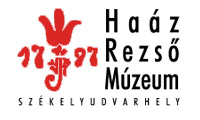Kovács Petronella (szerk.): Isis - Erdélyi magyar restaurátor füzetek 10. (Székelyudvarhely, 2010)
B. Perjés Judit - Domokos Levente - Puskás Katalin: Tíz nap a "Nagy-Küküllő felső folyása mentén" avagy hazi és vendég restaurátorok a székelykeresztúri Molnár István Múzeum születő állandó kiállításán
Abstracts Attila L. Tóth Electron Probe Microanalysis (EPMA) in Restoration Part 2: The X-Ray Measurement and its Interpretation The SEM is generally considered as a user-friendly, basically qualitative instrument, where the results can be obtained from observation of the surprisingly realistic images. High magnification and good depth of focus are the most important features. On the other hand the SEM provides much more than a simple super magnifying glass. It can be considered as an analytical measuring system (AMS), where localized experiments of electron-solid interaction are made with results interpreted (in most but not all of the cases) as images. In Part 1, the AMS concept was presented with the excited volume and the most useful analytical signals (backscattered-, secondary electrons, X-rays, their detection and analytical information provided by them) together with the technical realization of imaging in the SEM. In Part 2 we concentrate to the X-Ray measurement, i.e. the elemental microanalysis (EPMA, microprobe, microsonde). From AMS point of view the X-rays and their detector is nothing more than another output signal from the numerous ones, but historically it is the first really quantitative SEM measurement (from 1948), practically one of the most versatile technique of the chemical microanalysis. The restorers, interested in local composition of the piece of art, most likely meet a SEM equipped with energy dispersive X-ray spectrometer (SEM-EDS) or its results. If they can take part in the measurement (what is highly recommended), it is useful to take part in the setting up the strategy and parameters of the measurement, because the knowledge of the sample is important and can improve the results. On the other hand, if the results are simply presented, or they are read in reports or literature, it is even more important to know the interpretation of the data, and the possible artifacts of the method, in order to avoid the false conclusions. Some of the artifacts arise during the detection and processing of the X-ray quanta. The escape peak (appearing at energy 1,74 keV less than the real peak) reflects the fact, that in the Si detector Si KA X-rays are excited, which escaping from the detection process decreases the detected energy. (Example of misinterpretation: the escape peak of Cu KA interpreted as Fe KA). In quantitative analysis the programs remove the escape peaks. The sum peak is generated, if the detector - in high intensity measurements - is unable to resolve two quanta, and gives a peak at double energy. (Example: the sum peak of A1 KA interpreted as Ar KA). If the intensity of the electron (and consequently the X-ray) beam is kept below the limit given by the supplier of the EDS, the sum peaks can be avoided. Spectral contamination can be generated if the backscattered electron beam or the high energy X-rays from the sample reach large area of the sample environment, i.e. the too large holder, or the wall of the SEM chamber. Careful preparation and orientation of the sample, together with collimation of the detector can minimize these effects. The quantitative EPMA generally requires the analysis of all constituents of a flat, solid conductive specimen with known orientation, which is homogeneous over the excited volume. If rough, porous, stratified, insulating samples are investigated, extreme care has to be taken to the details of direct and indirect generation inside and outside of the excited volume, together with absorption and shadowing. In the last section, a quantitative analytical measurement is demonstrated step by step, from peak identification through definition of the region of interest until the quantitative data correction. Comparison the goodness of results it can be seen, that due to nonlinearity of correction methods the correct average concentrations can be obtained from averaging the results from individual point analyses instead of exciting inhomogeneous areas, then processing the arising single spectrum. Attila L. Tóth, PhD CSc Physicist Research Institute of Technical Physics and Materials Science of the H.A.S. (MTA MFA) Budapest Phone: +36-30-984-3763 E-mail: tothalmfa.kfli.hu Zsuzsanna Mara Conservation of a 15th—16th century altar-piece titled Mary’s Crowning The 15th— 16th century altar-piece is a representative item of the church collection of the Csíki Székely Museum. According to the preserved documents, it got to the museum from the Catholic church of Csíkszentdomokos in Felesik in the 1950’s. The central figure of the panel painting is Mary on the knees in a light-coloured dress of a lilac tint. She turns slightly to the right turning down up her clasped hands. The three young males of identical features, who 186
